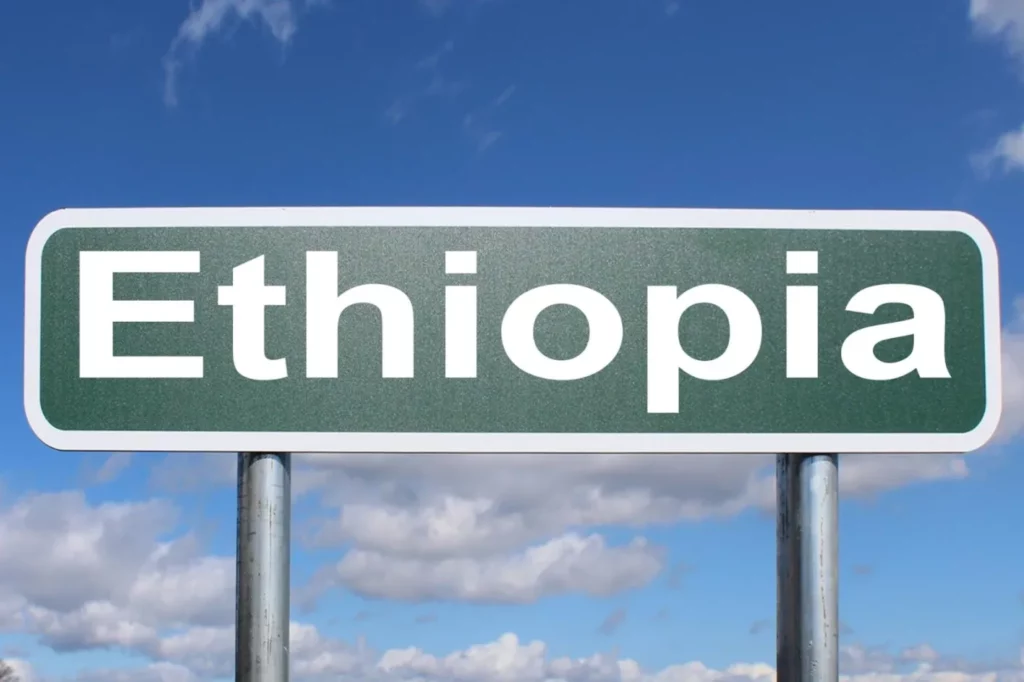
Why is the Ethiopian Calendar different?
In a recent TikTok video, a content creator was spotted informing her followers that Ethiopia is seven years behind the rest of the world.
This discussion about the distinctive Ethiopian Calendar is a recurring trend on social media every year. Each time the issue surfaces online, questions and reactions abound, with people seeking to unravel the mystique surrounding Ethiopia’s unique timekeeping style.
The myriad of questions on the topic prompted DUBAWA to write this report.
Ethiopia is located in East Africa and is Africa’s second-largest country in terms of population. It uses a unique calendar system different from the widely used Gregorian calendar. The Ethiopian Calendar, also called “Ge’ez,” is seven to eight years behind the Gregorian Calendar.
The main reason for this difference is that the Ethiopian Calendar places Jesus’ birth in 7 BC (Before Christ) and begins its count from that point. On the flip side, the Gregorian calendar marks Jesus’ birth as 1 AD and initiates its date count from that time.
In the era before Christ (BC), days were counted backwards, and eras were labelled based on the notion of when Jesus was born. BC means “Before Christ,” and AD stands for “Anno Domini or in the year of the Lord.” In non-Christian countries, AD is replaced with CE, “Common Era,” and BC to BCE, “Before the Common Era.”
There are eight years of difference between 7 BC, when the Ethiopians believed Jesus was born, and 1 AD, which followed the Gregorian calendar. From 7 BC, the year is counted to 6 BC, 5 BC, 4 BC, 3 BC, 2 BC, 1 BC, and 1 AD. This, and other astronomical calculations, explain the years apart in both calendars.
Evolution of calendar systems in history
A calendar system is a way people measure the passage of time. Ancient humans deployed different ways to determine the length of the year and track seasons to organise agricultural activities, plan religious ceremonies, and coordinate cultural events.
Throughout history, calendars have been shaped by a combination of cultural practices, religious beliefs, and astronomical observations.
The evolution of the calendar starts with the Mayan long calendar, the Roman calendar, the Julian calendar, and the Gregorian calendar, among others.
The Julian calendar is based on the solar system. It calculates time and dates based on the Earth’s orbit around the sun. It was used for about 1,600 years but was criticised for not accurately reflecting the time it takes the Earth to revolve around the sun.
The Julian Calendar sets a year at 365.25 days, and since no year matches the extra 0.25, a year is rounded up to 365 days and 366 days in a leap year every four years to align the calendar with the solar year more closely.
It was later discovered that the time of the year, according to the Julian calendar, was off by 11 minutes, which led to Pope Gregory XIII’s calendar reform in 1582.
The new calendar was named after Gregory, who made it the Gregorian calendar. The Gregorian calendar adopted the Julian calendar with a few updated features.
Other unique calendars today include the Chinese calendar, Hebrew calendar, Hijra calendar, and Hijiri Solar calendar, among others.
These calendars are used solely as the primary calendar systems in countries that adopt them or alongside the Gregorian calendar to mark both religious and civil purposes.
One obvious fact in these trends is that different people in different cultures develop their timekeeping systems. This was the case in Ethiopian culture.
Some unique features of the Ethiopian Calendar
The Ethiopian calendar is based on the same astronomical calculations as the Gregorian calendar, albeit with some differences in the calculation method and starting point.
A full year in Ethiopia comprises 13 months. The first 12 months have 30 days each, the 13th month has five days, and in a leap year, it has six days.
While the Gregorian calendar celebrates the new year on January 1 and Christmas on Dec 25, Ethiopia’s new year starts on Sept 11 or Meskerem 1, while Christmas is celebrated on Jan 7.
Unravelling some myths around the Ethiopian Calendar
DUBAWA engaged an Ethiopian, Ms Hanna, in a dialogue session to demystify some myths about the Ethiopian Calendar.
One of the myths around the Ethiopian Calendar is that one becomes eight years younger when one travels to Ethiopia.
“Travelling to Ethiopia wouldn’t make someone physically younger by eight years. The difference in calendars doesn’t affect one’s age or the passage of time in a biological sense. It’s merely a difference in how years are calculated and recorded,” Ms Hanna noted.
Also, people claim Ethiopia is currently in 2017. Ms Hanna explained,
“Currently, Ethiopia is in 2016, precisely in the 8th month, and it is called Miazya.”
Conclusion
Historical records on the evolution of calendar systems and the Ethiopian calendar indicate that the Ethiopian calendar is seven to eight years behind the Gregorian calendar. Currently, Ethiopia is in 2016, the eighth month of Miazya.
This fact-check was produced as part of the DUBAWA 2024 Kwame KariKari Fellowship in partnership with Dataphyte to facilitate the ethos of “truth” in Journalism and enhance media and information literacy in the country.
Source: dubawa.org

